|

|
Working Identity:
It is hard for people to achieve the objectivity they need to question and change their daily routines while they are still actively immersed in them.
|
151 |
|
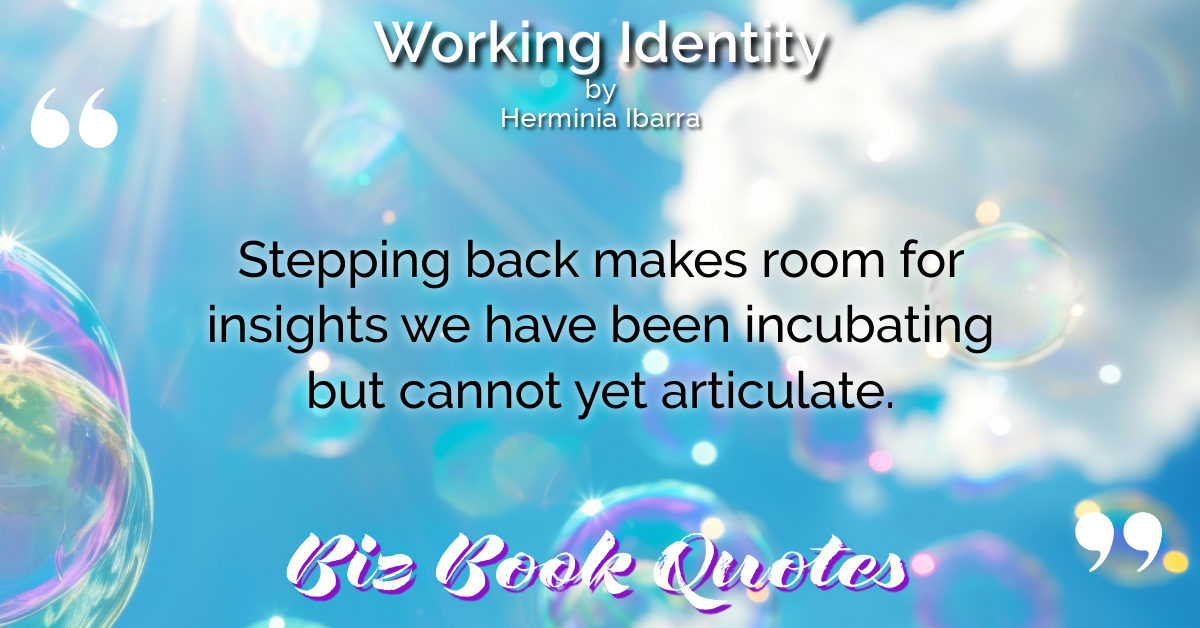
|
Working Identity:
Stepping back makes room for insights we have been incubating but cannot yet articulate.
|
151 |
|
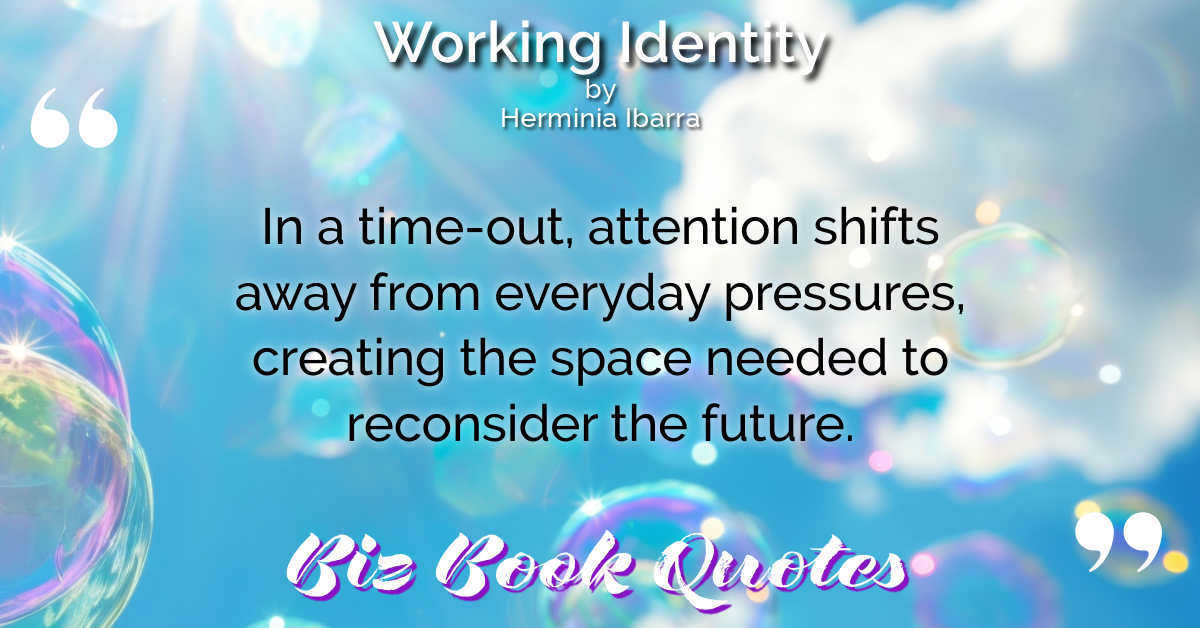
|
Working Identity:
In a time-out, attention shifts away from everyday pressures, creating the space needed to reconsider the future.
|
152 |
|
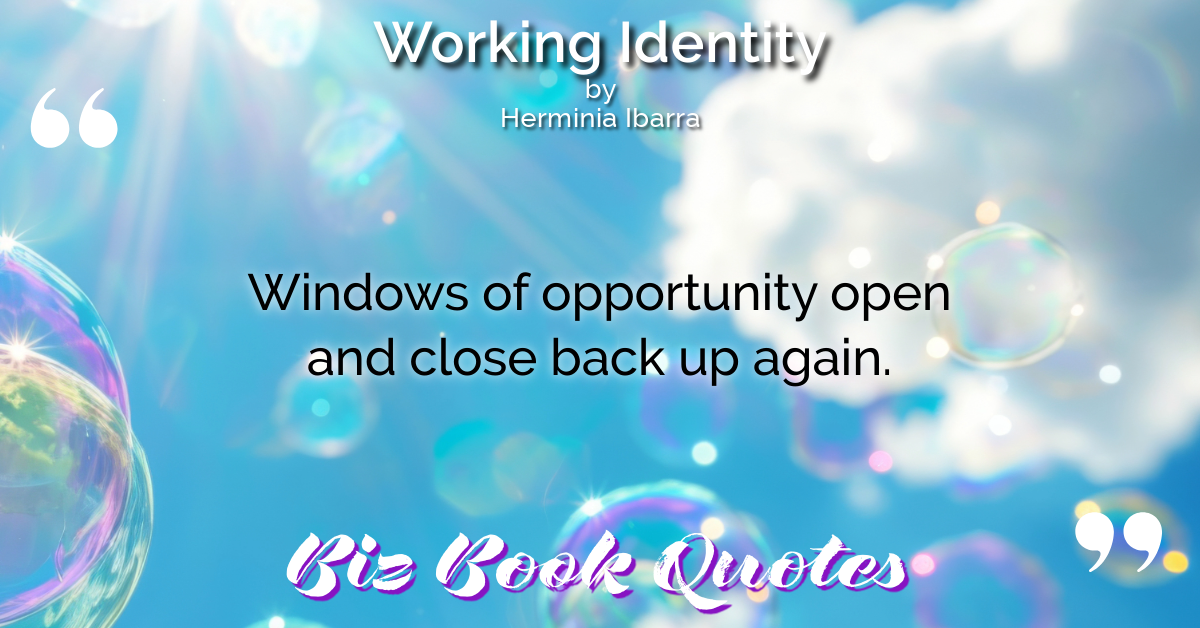
|
Working Identity:
Windows of opportunity open and close back up again.
|
155 |
|
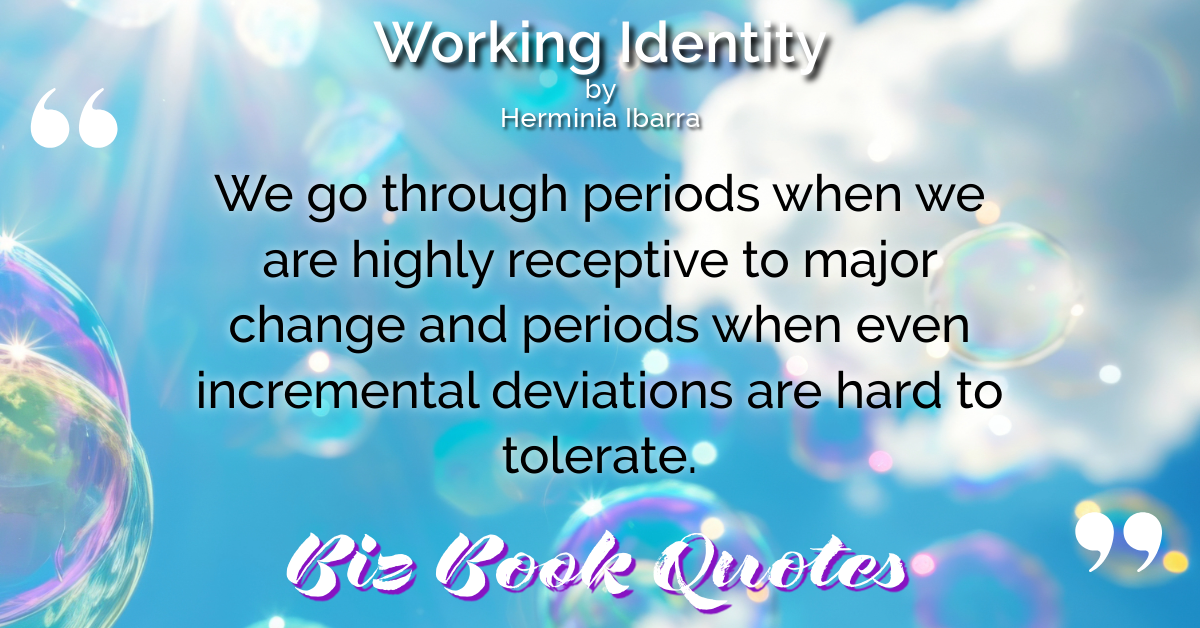
|
Working Identity:
We go through periods when we are highly receptive to major change and periods when even incremental deviations are hard to tolerate.
|
155 |
|
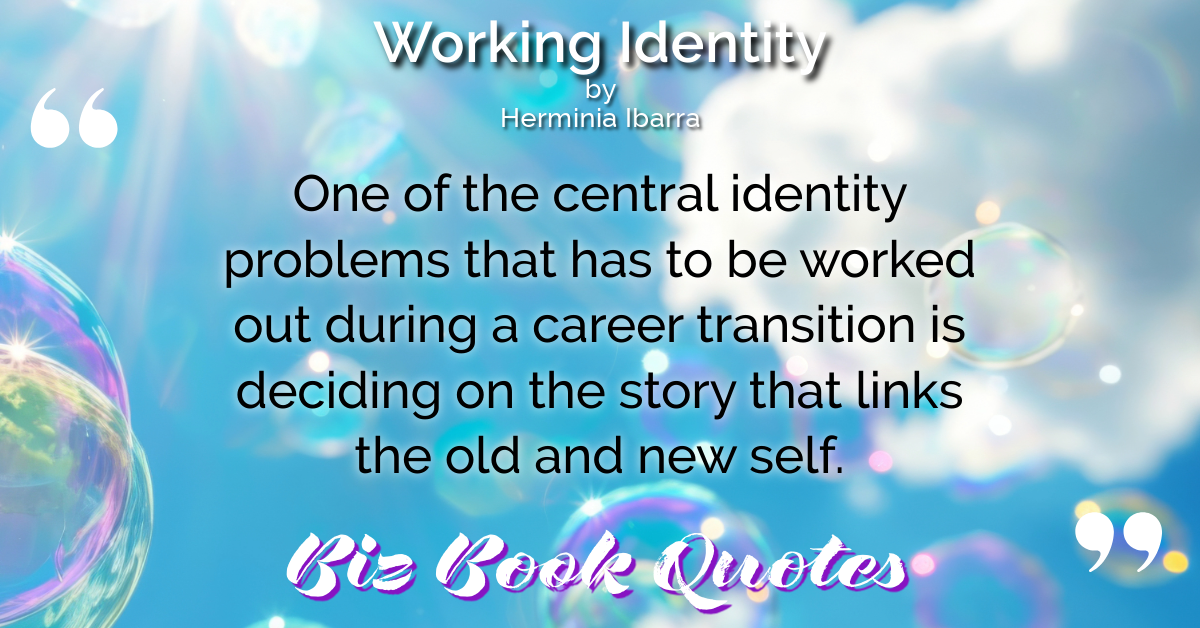
|
Working Identity:
One of the central identity problems that has to be worked out during a career transition is deciding on the story that links the old and new self.
|
156 |
|
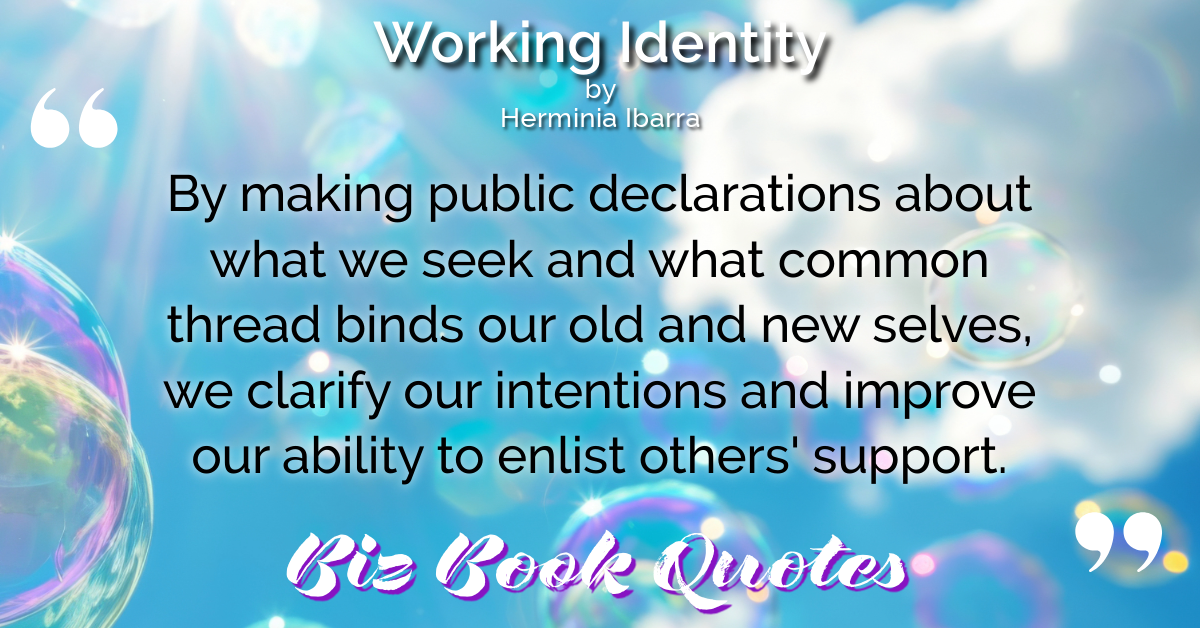
|
Working Identity:
By making public declarations about what we seek and what common thread binds our old and new selves, we clarify our intentions and improve our ability to enlist others’ support.
|
157 |
|
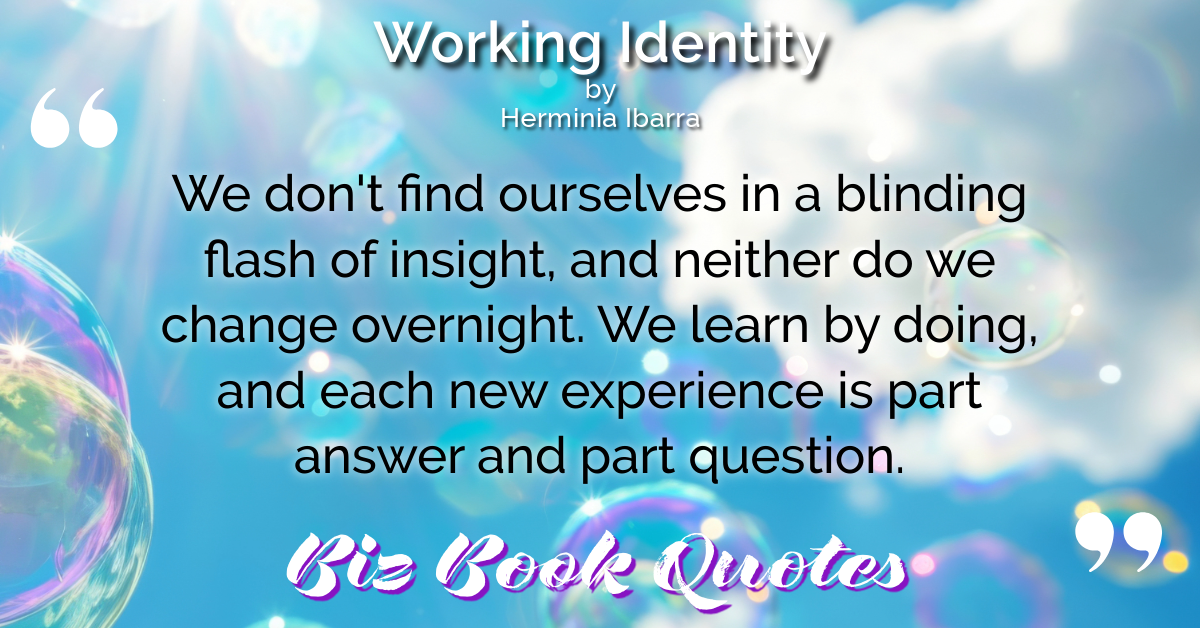
|
Working Identity:
We don’t find ourselves in a blinding flash of insight, and neither do we change overnight. We learn by doing, and each new experience is part answer and part question.
|
161 |
|
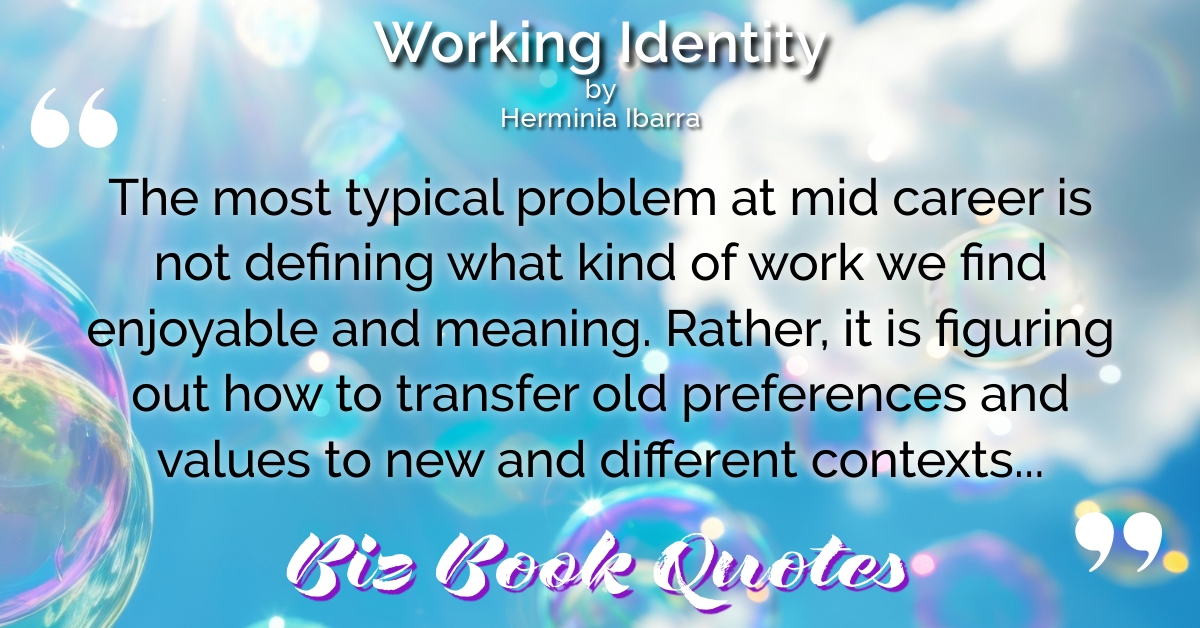
|
Working Identity:
The most typical problem at mid career is not defining what kind of work we find enjoyable and meaning. Rather, it is figuring out how to transfer old preferences and values to new and different contexts…
|
163 |
|
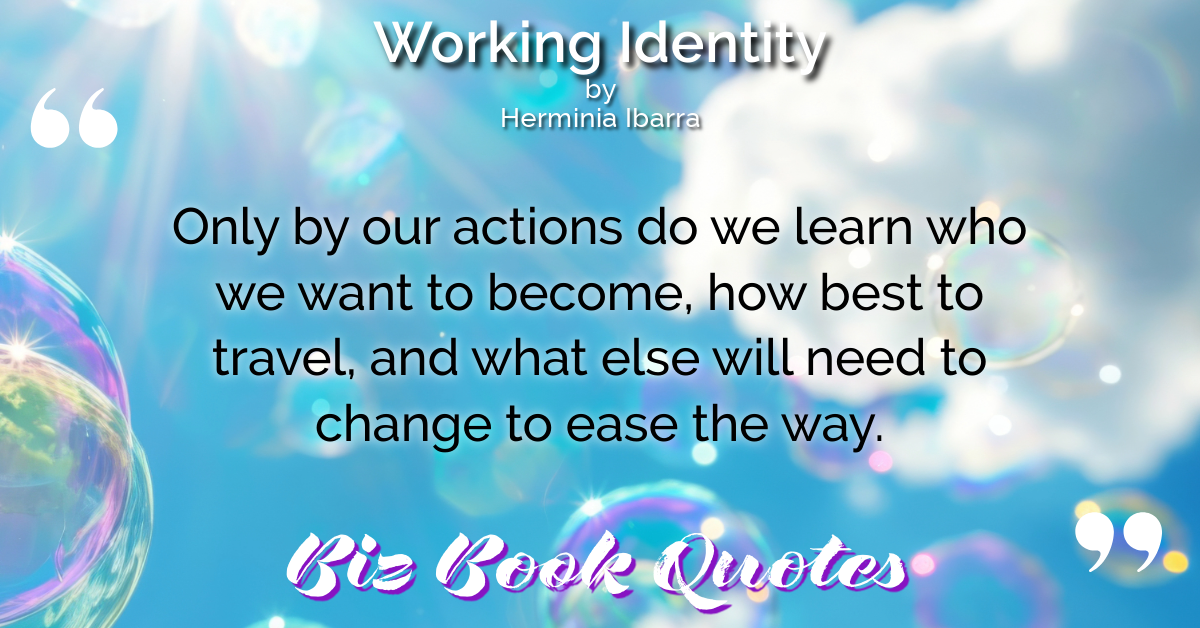
|
Working Identity:
Only by our actions do we learn who we want to become, how best to travel, and what else will need to change to ease the way.
|
163 |











